Abstract
2-Amino-5-bromo-6-methyl-4-pyrimidinol (U-25,166) induced high levels of circulating interferon in mice when administered either parenterally or orally. Peak titers of interferon were found in the serum between 6 and 12 h after inoculation of the drug. Lower but significant levels of interferon were found in rat serum after administration of U-25,166 by either the intraperitoneal or oral route, and good levels of circulating interferon were observed in cats after oral treatment. Repeated intraperitoneal doses (50 mg/kg) of U-25,166 protected mice against intranasal encephalomyocarditis virus challenge. The minimal effective acute oral dose for antiviral activity was approximately 250 mg/kg. This was also the minimal dose that produced detectable levels of interferon. Maximum tolerated doses in mice were four to six times the minimal effective doses. A single oral treatment was protective in mice against challenge virus inoculated 24 h later. The compound protected mice from challenge with high levels of encephalomyocarditis virus, up to 20,000 mean lethal doses. Antiviral activity in mice was retained when certain minor substitutions were made in the U-25,166 structure.
Full text
PDF
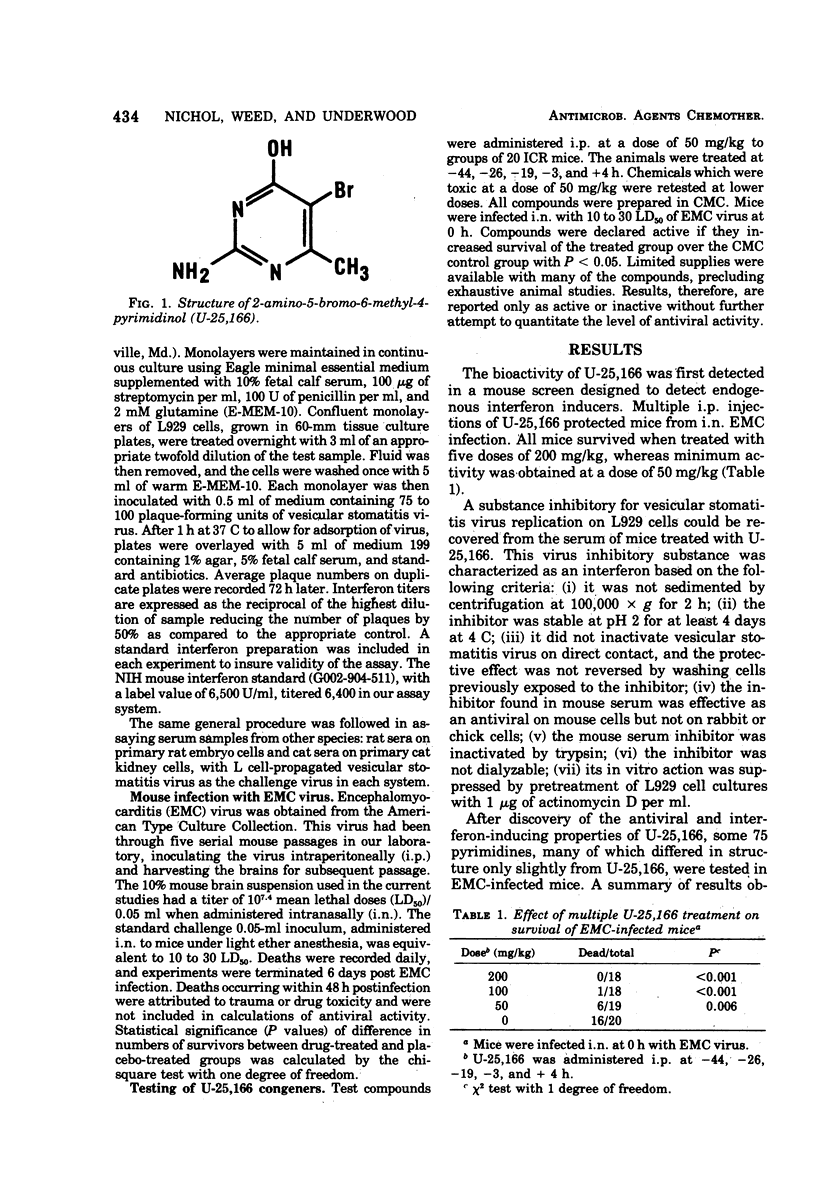
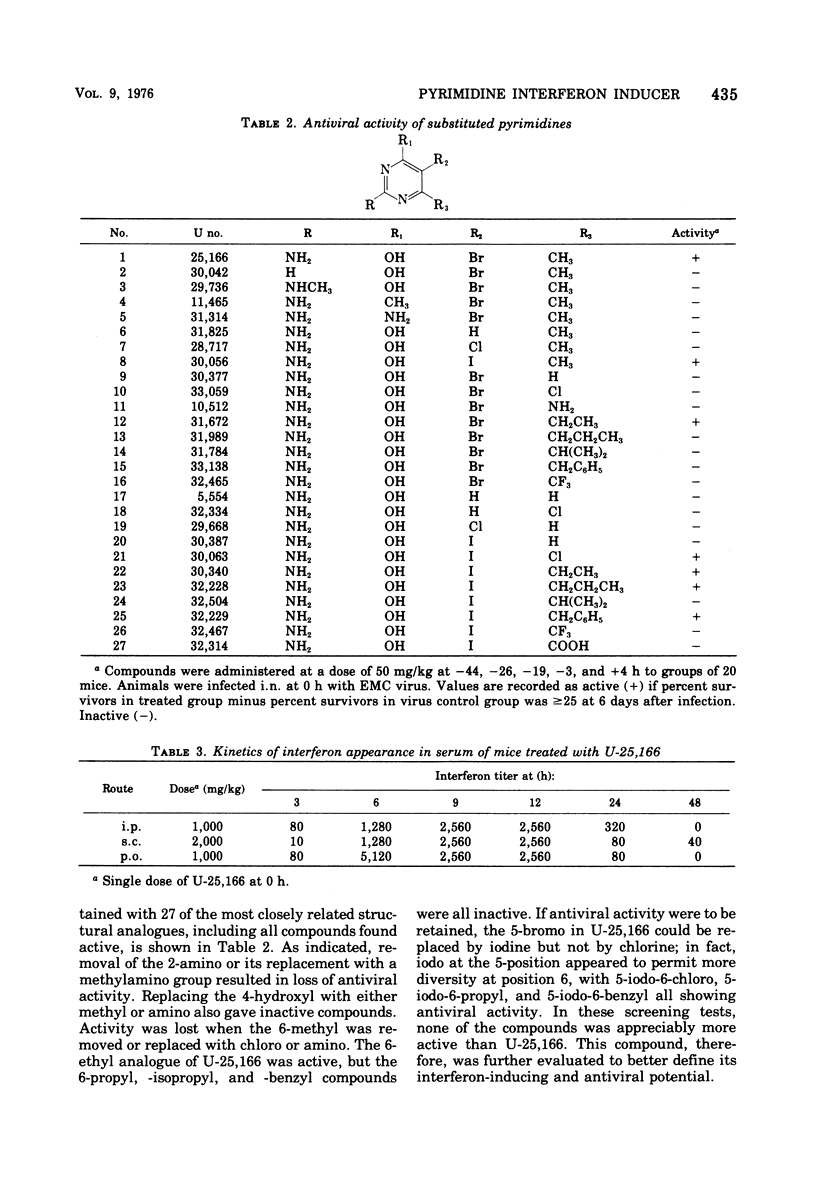
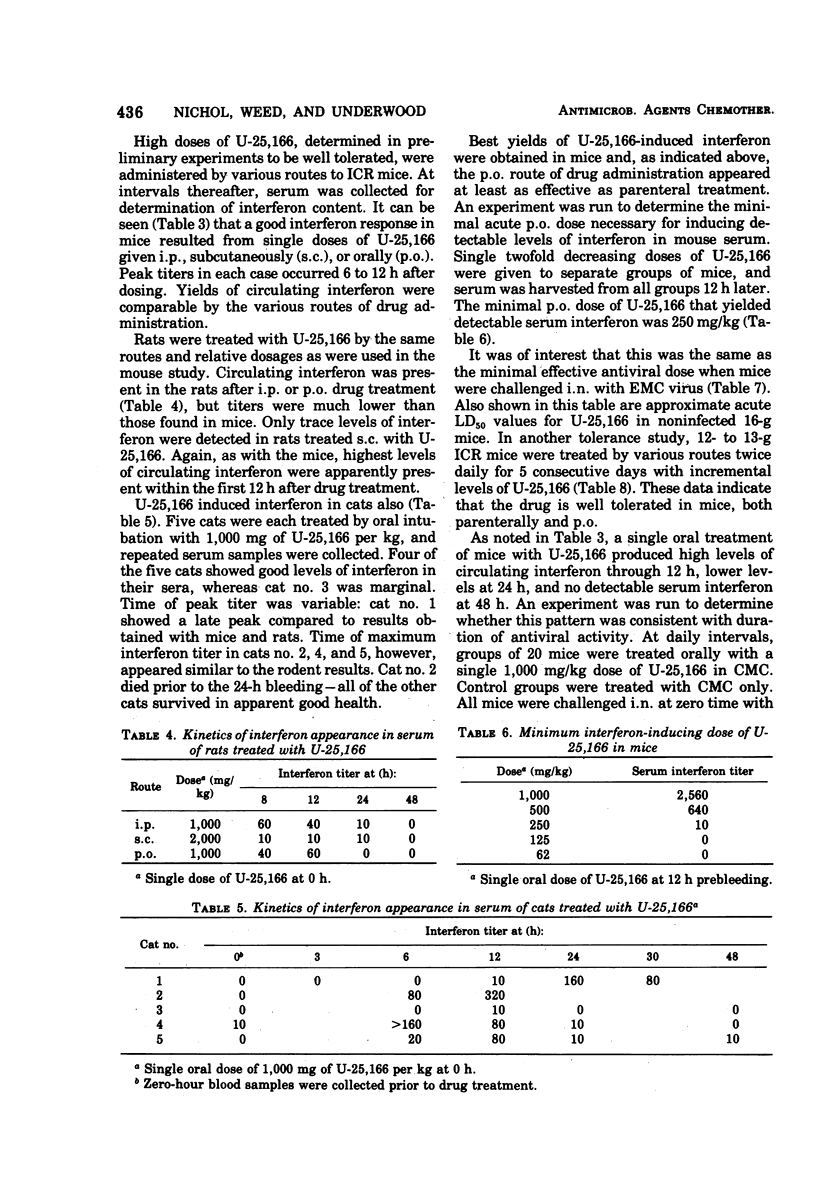

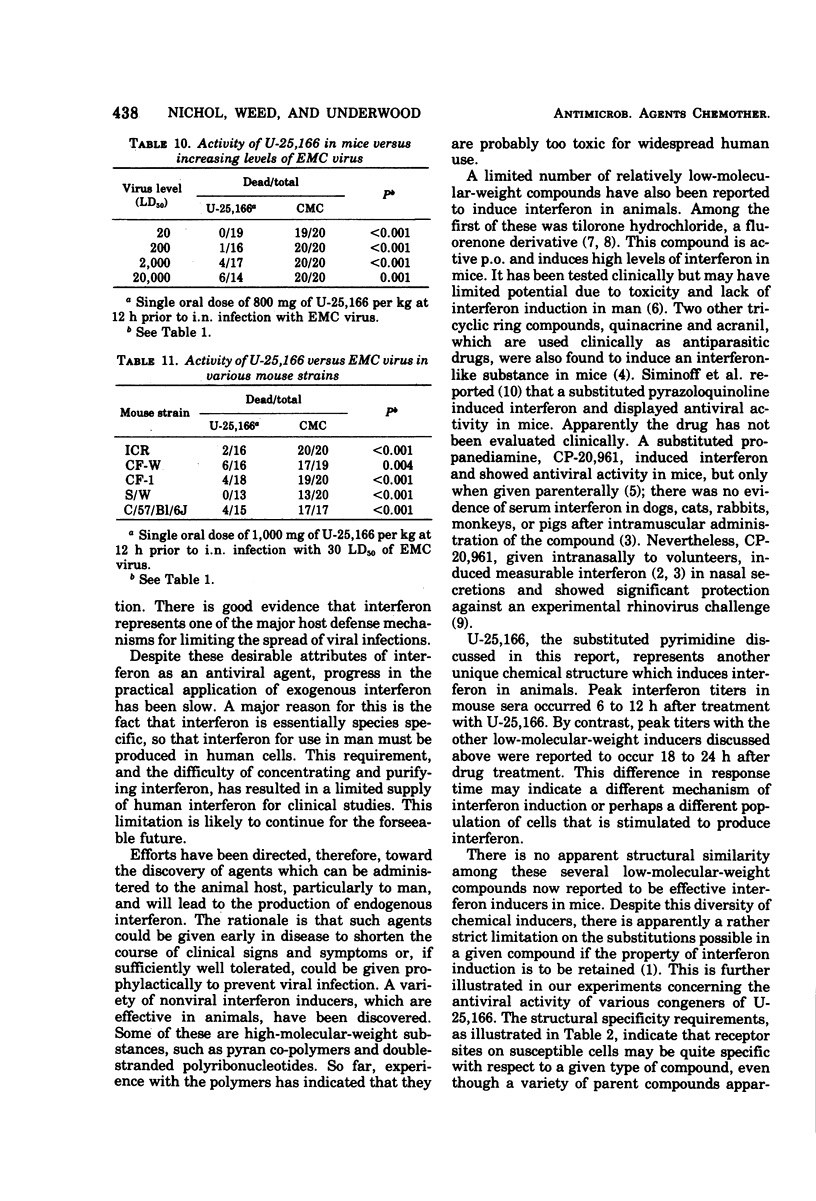
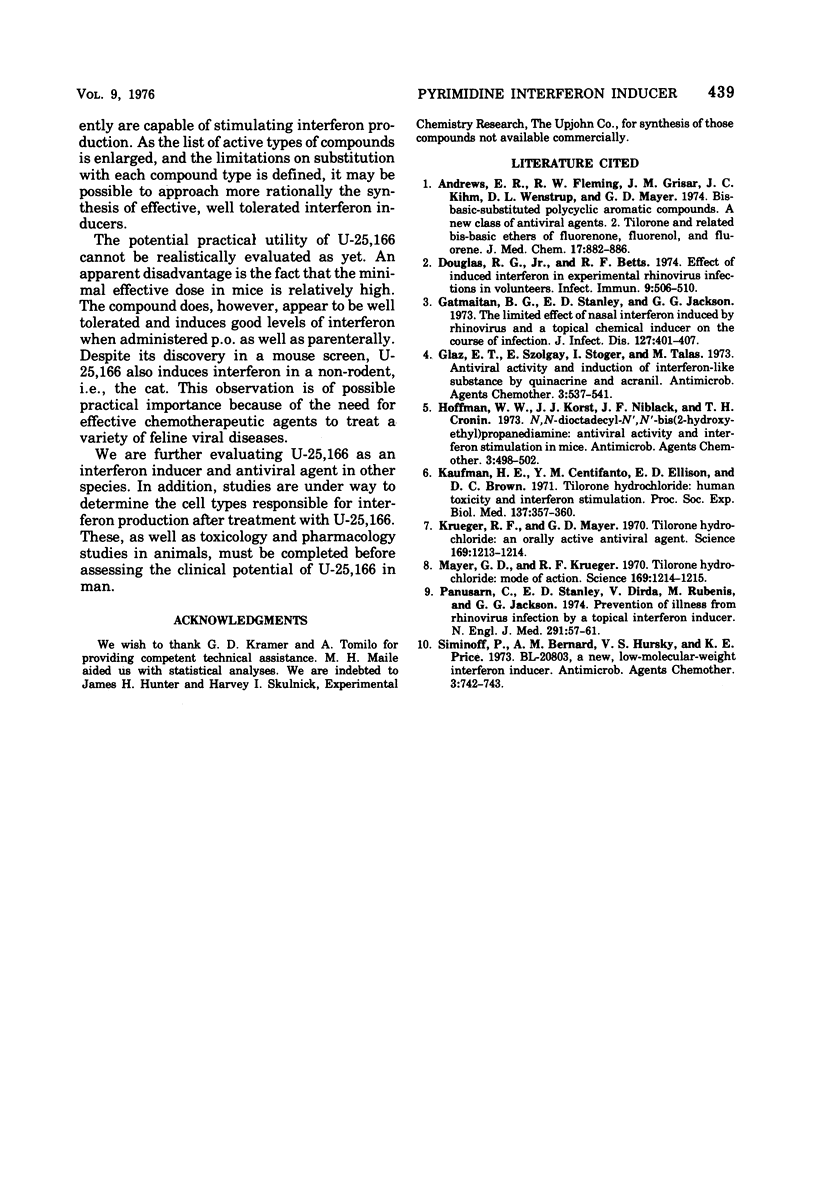
Selected References
These references are in PubMed. This may not be the complete list of references from this article.
- Andrews E. R., Fleming R. W., Grisar J. M., Kihm J. C., Wenstrup D. L., Mayer G. D. Bis-basic-substituted polycyclic aromatic compounds. A new class of antiviral agents. 2. Tilorone and related bis-basic ethers of fluorenone, fluorenol, and fluorene. J Med Chem. 1974 Aug;17(8):882–886. doi: 10.1021/jm00254a020. [DOI] [PubMed] [Google Scholar]
- Douglas R. G., Jr, Betts R. F. Effect of induced interferon in experimental rhinovirus infections in volunteers. Infect Immun. 1974 Mar;9(3):506–510. doi: 10.1128/iai.9.3.506-510.1974. [DOI] [PMC free article] [PubMed] [Google Scholar]
- Gatmaitan B. C., Stanley E. D., Jackson G. G. The limited effect of nasal interferon induced by rhinovirus and a topical chemical inducer on the course of infection. J Infect Dis. 1973 Apr;127(4):401–407. doi: 10.1093/infdis/127.4.401. [DOI] [PubMed] [Google Scholar]
- Gláz E. T., Szolgay E., Stöger I., Tálas M. Antiviral activity and induction of interferon-like substance by quinacrine and acranil. Antimicrob Agents Chemother. 1973 May;3(5):537–541. doi: 10.1128/aac.3.5.537. [DOI] [PMC free article] [PubMed] [Google Scholar]
- Hoffman W. W., Korst J. J., Niblack J. F., Cronin T. H. N,N-dioctadecyl-N',N'-bis(2-hydroxyethyl) propanediamine: antiviral activity and interferon stimulation in mice. Antimicrob Agents Chemother. 1973 Apr;3(4):498–502. doi: 10.1128/aac.3.4.498. [DOI] [PMC free article] [PubMed] [Google Scholar]
- Kaufman H. E., Centifanto Y. M., Ellison E. D., Brown D. C. Tilorone hydrochloride: human toxicity and interferon stimulation. Proc Soc Exp Biol Med. 1971 May;137(1):357–360. doi: 10.3181/00379727-137-35576. [DOI] [PubMed] [Google Scholar]
- Krueger R. E., Mayer G. D. Tilorone hydrochloride: an orally active antiviral agent. Science. 1970 Sep 18;169(3951):1213–1214. doi: 10.1126/science.169.3951.1213. [DOI] [PubMed] [Google Scholar]
- Mayer G. D., Krueger R. F. Tilorone hydrochloride: mode of action. Science. 1970 Sep 18;169(3951):1214–1215. doi: 10.1126/science.169.3951.1214. [DOI] [PubMed] [Google Scholar]
- Panusarn C., Stanley E. D., Dirda V., Rubenis M., Jackson G. G. Prevention of illness from rhinovirus infection by a topical interferon inducer. N Engl J Med. 1974 Jun 11;291(2):57–61. doi: 10.1056/NEJM197407112910201. [DOI] [PubMed] [Google Scholar]
- Siminoff P., Bernard A. M., Hursky V. S., Price K. E. BL-20803, a new, low-molecular-weight interferon inducer. Antimicrob Agents Chemother. 1973 Jun;3(6):742–743. doi: 10.1128/aac.3.6.742. [DOI] [PMC free article] [PubMed] [Google Scholar]


